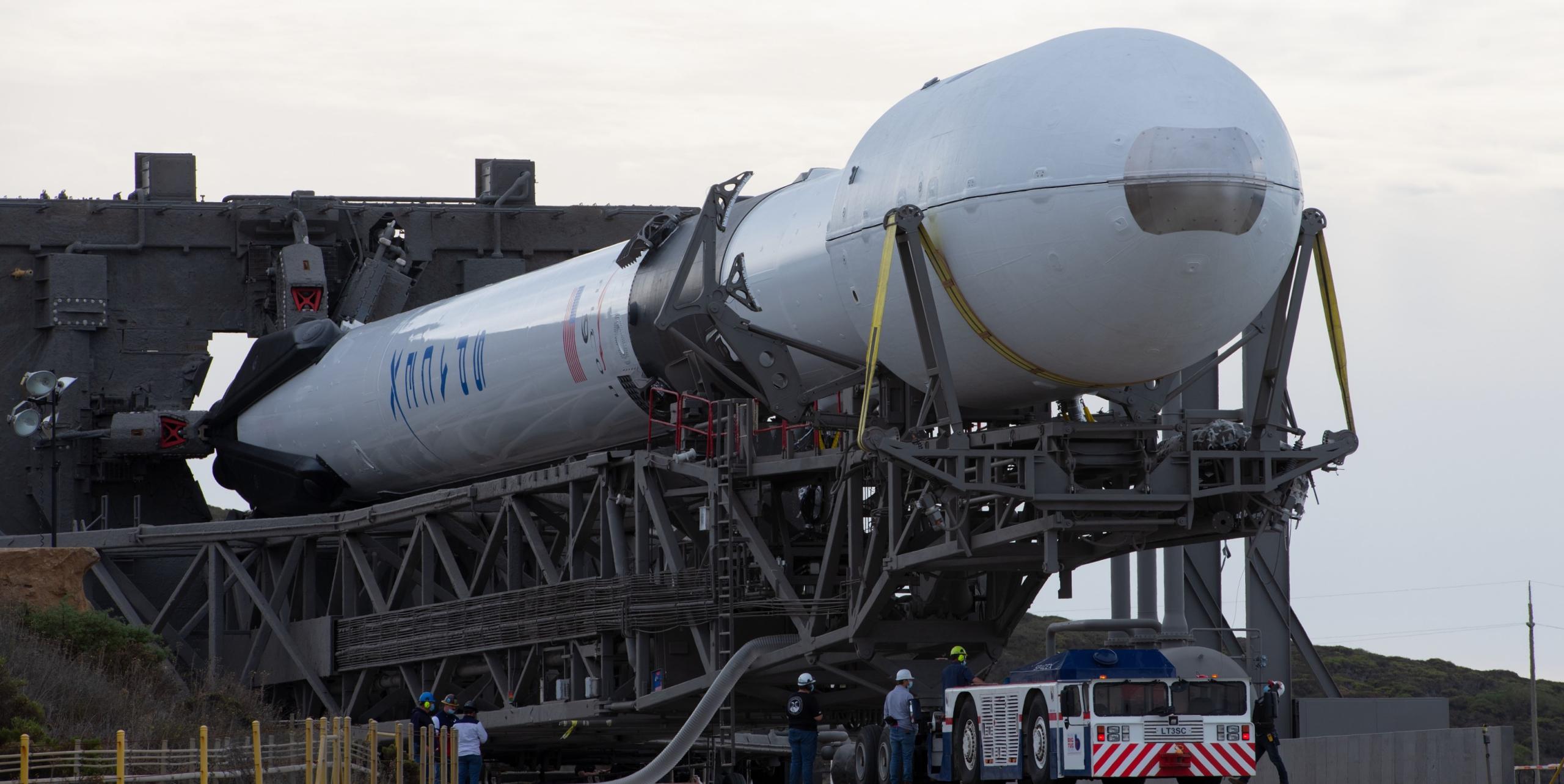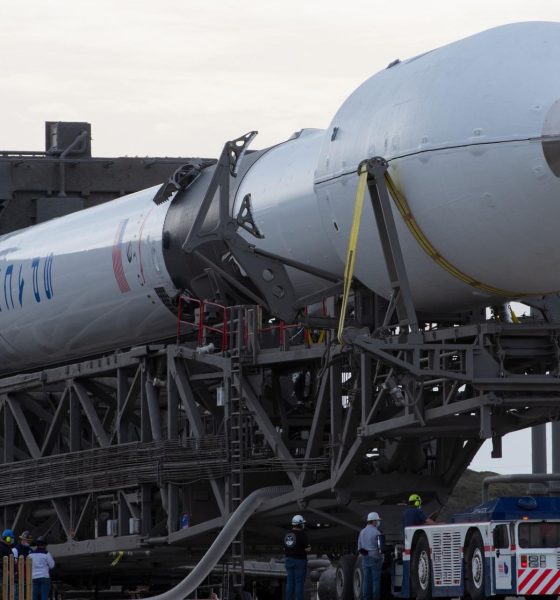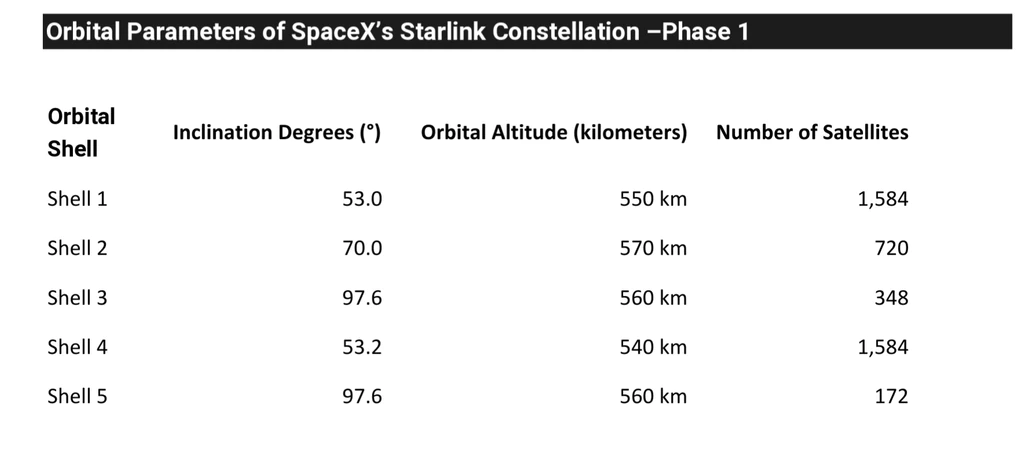

News
SpaceX delays Starlink launch to Sunday for “constellation optimization”
SpaceX has revealed a new and mysterious reason to delay its own rocket launch: something called “constellation optimization.”
Known as Starlink 2-4, the mission is now scheduled to launch a batch of 51 Starlink V1.5 satellites to a semi-polar Earth orbit no earlier than (NET) 8:15 am PST (16:15 UTC) on Sunday, January 15th. That represents a big shift in launch timing, as more recent attempts were aiming to lift off around 7-8 pm. A significant time change often implies that a launch is targeting a completely different destination, but data provided by SpaceX suggests that that’s not the case, raising more questions.
The update that's rolling out to the fleet makes full use of the front and rear steering travel to minimize turning circle. In this case a reduction of 1.6 feet just over the air— Wes (@wmorrill3) April 16, 2024
Starlink 2-4 is not new to launch delays. Originally scheduled to launch in November 2022, unspecified issues with the rocket caused SpaceX to indefinitely delay the mission. Launches for NASA and an Israeli company then took precedence, pushing Starlink 2-4 into early 2023. SpaceX announced a target of January 9th, but that attempt was called off by poor weather in the Pacific Ocean, where the mission’s Falcon 9 booster is scheduled to land.
SpaceX then delayed the mission from January 10th to the 11th “to take a closer look at data from second stage.” On January 11th, SpaceX delayed the mission to January 14th “to allow additional time for pre-launch checkouts.” Less than four hours later, SpaceX delayed the mission again, settling on the current January 15th target and debuting “constellation optimization” as a rare new cause of launch delays.

Logical speculation suggested that constellation optimization – combined with the major timing change – could have referred to a decision to launch Starlink 2-4 to a different orbital shell. SpaceX’s Starlink Gen1 constellation has five distinct shells, and the company’s Vandenberg Space Force Base (VSFB), California pad can theoretically launch to all of them. SpaceX’s Starlink V1.5 satellites are also theoretically identical, meaning that any satellite can launch to any shell and do its job without issue.
However, updated orbit data (Two Line Elements or TLEs) disseminated by SpaceX shows that Falcon 9 is still scheduled to launch Starlink 2-4 to a nearly identical orbit and thus the same Group 2 shell as before. “Constellation optimization” could instead refer to changing which planes the same Group 2 satellites end up at, tweaking where and when their added coverage will be felt most by Starlink internet users.
Next Spaceflight reports that Starlink 2-4 will use Falcon 9 booster B1075, marking the second time the company has debuted a new Falcon booster on an internal mission. Up until very recently, new Falcon boosters were almost always reserved for NASA or the US military, SpaceX’s most conservative customers. But SpaceX’s program of Falcon booster reuse has become so successful and so routine that even NASA and the military appear to be ambivalent about taking advantage of the first launch of a new Falcon 9.
B1075 will attempt to land on drone ship Of Course I Still Love You (OCISLY) around 662 kilometers (411 mi) southwest of California, off of Mexico’s Baja Peninsula. SpaceX will broadcast the launch and landing live, beginning around 8:13 am PST (16:13 UTC) on Sunday if the mission can avoid further delays.

Elon Musk
Elon Musk just said some crazy stuff about the Tesla Roadster

Elon Musk appeared on the Moonshots podcast with Peter Diamandis today to discuss AGI, U.S. vs. China, Tesla, and some other interesting topics, but there was some discussion about the upcoming unveiling of the Roadster, the company’s electric supercar that will arrive several years after it was initially slated for release.
Musk made some pretty amazing claims about the Roadster; we already know it is supposed to be lightning-fast and could even hover, if Tesla gets everything to happen the way it wants to. However, the car has some pretty crazy capabilities, some of which have not even been revealed.
On the podcast, Musk said:
“This is not a…safety is not the main goal. If you buy a Ferrari, safety is not the number one goal. I say, if safety is your number one goal, do not buy the Roadster…We’ll aspire not to kill anyone in this car. It’ll be the best of the last of the human-driven cars. The best of the last.”
🚨 Elon on the Roadster unveiling, scheduled for April 1:
— TESLARATI (@Teslarati) January 6, 2026
Musk makes a good point: people who buy expensive sports cars with ridiculous top speeds and acceleration rates do not buy them to be safe. They hope they are safe in case of an emergency or crash, but safety is not at the forefront of their thoughts, because nobody buys a car thinking they’ll crash it.
The Roadster is truly going to push the limits and capabilities of passenger vehicles; there’s no doubt about that. Tesla plans to show off the new version car for the first time on April 1, and Musk has only hinted at what is possible with it.
Musk said back in November:
“Whether it’s good or bad, it will be unforgettable. My friend Peter Thiel once reflected that the future was supposed to have flying cars, but we don’t have flying cars. I think if Peter wants a flying car, he should be able to buy one…I think it has a shot at being the most memorable product unveiling ever. [It will be unveiled] hopefully before the end of the year. You know, we need to make sure that it works. This is some crazy technology in this car. Let’s just put it this way: if you took all the James Bond cars and combined them, it’s crazier than that.”
Production is set to begin between 12 and 18 months after the unveiling, which would put the car out sometime in 2027. Hopefully, Tesla is able to stay on track with the scheduling of the Roadster; many people have been waiting a long time for it.
News
Tesla launches hiring for Robotaxi program in its twentieth country
Overall, the hiring signals Tesla’s aggressive timeline for global dominance in autonomous mobility.

Tesla has launched a hiring initiative for its Robotaxi program in its twentieth country, as the company posted two new jobs in Thailand this week.
Tesla is hiring in Bangkok and Kowloon for the Vehicle Operator position, which is related to data collection, and is the first in Thailand, but the twentieth country overall, as the company tries to expand into other markets.
🚨 BREAKING: Tesla is hiring additional full-time Vehicle Operators in Bangkok, Thailand.
Previous openings were 6-month, part-time roles. These are equivalent to AI Safety Operator roles in the U.S. pic.twitter.com/R6LzoU1bos— Tesla Yoda (@teslayoda) January 5, 2026
Tesla has had active job postings for Vehicle Operator positions in the United States, India, Israel, Taiwan, Germany, the Czech Republic, Hungary, the UK, Finland, Switzerland, Sweden, the Netherlands, Austria, Spain, Norway, Italy, and Turkey in past listings.
These postings are not all currently available, likely because the roles have been filled.
Thailand is the most recent, and broadens the company’s potential path to expanding its ride-hailing program, which is only active in the United States in Austin, Texas, and the California Bay Area, so far.
These roles typically involve data collection, which assists in improving Autopilot and Full Self-Driving operation. Tesla’s self-driving programs utilize real-world data that is accumulated and stored, observing vehicle and traffic behavior, as well as tendencies that are performed by human drivers to help increase safety and overall performance.
Overall, the hiring signals Tesla’s aggressive timeline for global dominance in autonomous mobility. Although the company has several high-profile rivals and competitors in the field, it has established itself as a main player and a leader in the development of autonomous technology, especially in the U.S., as its FSD suite is refined on almost a weekly basis.
The Full Self-Driving suite is available in seven countries and territories currently, including the U.S., Canada, China, Mexico, Puerto Rico, Australia, and New Zealand. Its biggest goal for expansion is currently the European market, where regulatory hurdles have been the main bottleneck prolonging its launch on the continent.
Tesla has performed months of testing in various European countries, including France and Spain, and does have support in some areas from various regulatory agencies. However, the company is hoping to get through this red tape and offer its suite in Europe for the first time, hopefully this year.
News
Tesla China rolls out Model Y upgrades, launches low-interest financing
These strategies are aimed at improving the ownership experience and keeping vehicle pricing competitive in the world’s largest electric vehicle market.

Tesla has rolled out minor updates to the five-seat Model Y in China, upgrading the vehicle’s center display to a higher-resolution 16-inch 2K screen. The electric vehicle maker also introduced attractive financing options, including 7-year low-interest rates, to offset the new purchase tax on EVs.
These strategies are aimed at improving the ownership experience and keeping vehicle pricing competitive in the world’s largest electric vehicle market.
Five-seat Model Y gets larger, better display
With its recent update, all three variants of the five-seat Model Y now feature an upgraded 16-inch 2K resolution center display, which replaces the vehicle’s previous 15.4-inch 1080p panel. This screen was already used in the six-seat Model Y L, and it offered improved visual clarity. Tesla China has also updated the Model Y’s headliner to black, giving the vehicle a sleeker appearance.
Prices of the five-seat Model Y remain unchanged at RMB 263,500, RMB 288,500, and RMB 313,500 for the respective trims. This update enhances the cabin experience as domestic rivals are already adopting high-resolution screens. As noted in a CNEV Post report, some domestic automakers have begun rolling out vehicles equipped with 3K-resolution displays.
New financing offers
Tesla also launched ultra-long-term financing offers for its locally produced models in China, which include the Model 3 sedan, the five-seat Model Y, and the six-seat Model Y L, through January 31, 2026. The 7-year option features an annualized fee rate as low as 0.5%, which is equivalent to 0.98% interest. This is expected to save customers up to RMB 33,479 ($4,790) compared to standard rates.
A 5-year zero-interest plan is also available, and it has been extended to the Tesla Model Y L for the first time. These incentives help offset China’s new 5% purchase tax on New Energy Vehicles (NEVs) in 2026-2027. Some of Tesla’s rivals in China have announced in recent months that they would be covering the purchase tax owed by buyers early this year.








